Interface and application programming :
Never go without an UX
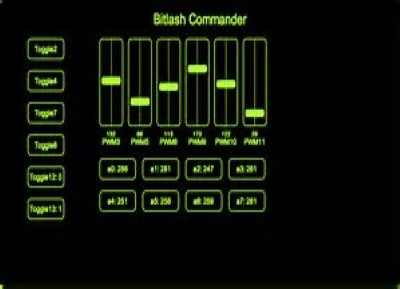
Assignment for this week
- Write an application that interfaces with an input and/or output device that you made, comparing as many tool options as possible.
----------------------------------------------------------------------------------------------------------------------------------
What I have done?
Specific material and softwares used during this assignment
- Material :
- 1 FabISP
- 1 Greenhouse board
- 1 arduino board as FTDI cable only
- 1 SG-5010 servo motor
- Jumper wires
- Software :
- Arduino IDE
- Gui library for processing
- Processing
- 1 FabISP
- 1 Greenhouse board
- 1 arduino board as FTDI cable only
- 1 SG-5010 servo motor
- Jumper wires
- Software :
- Arduino IDE
- Gui library for processing
- Processing
Electronic and GUI
For my final project, I have plan to have servo motors opening parts of the greenhouse. You can connect up to 3 motors, 3 dht sensors and 3 photos sensors.
Here, I will only use one servo motor and see how I can control it via a GUI
You can the schematic and PCB of the board in the picture below. Everything is SMD, except the connectors in PDIP
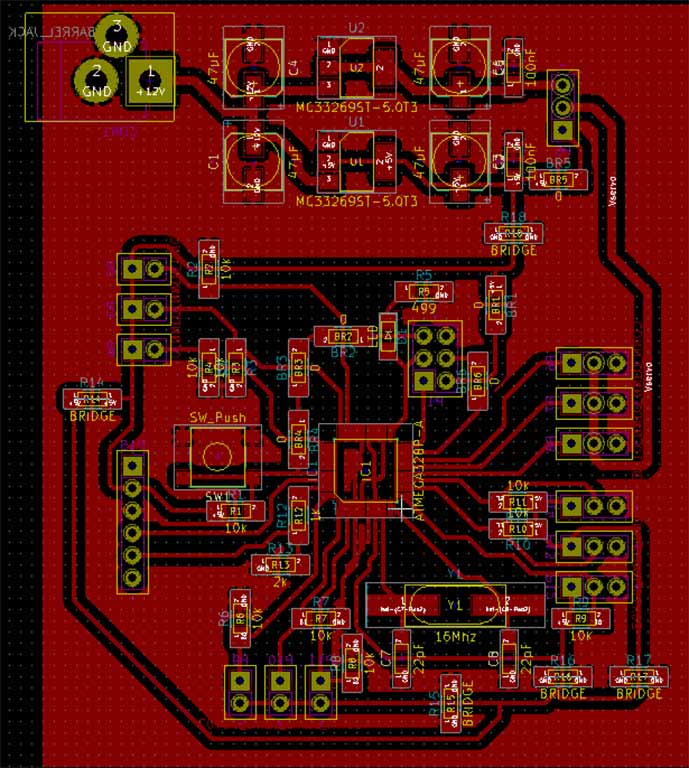
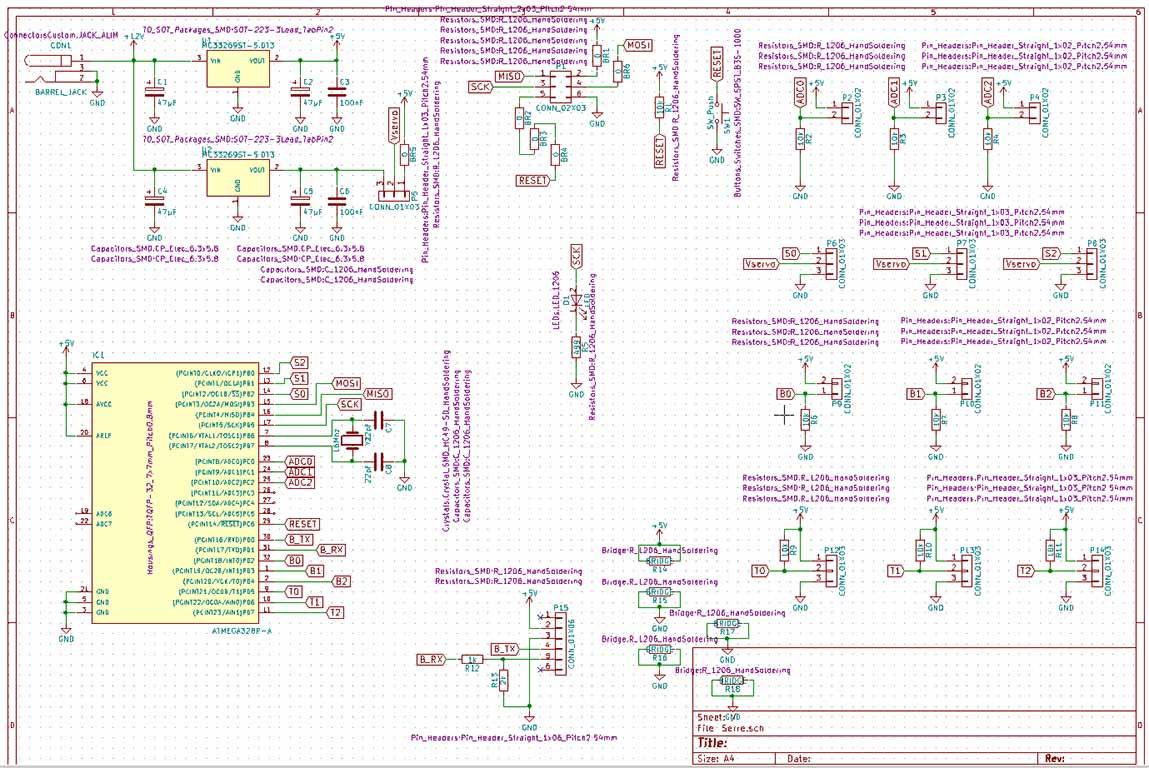
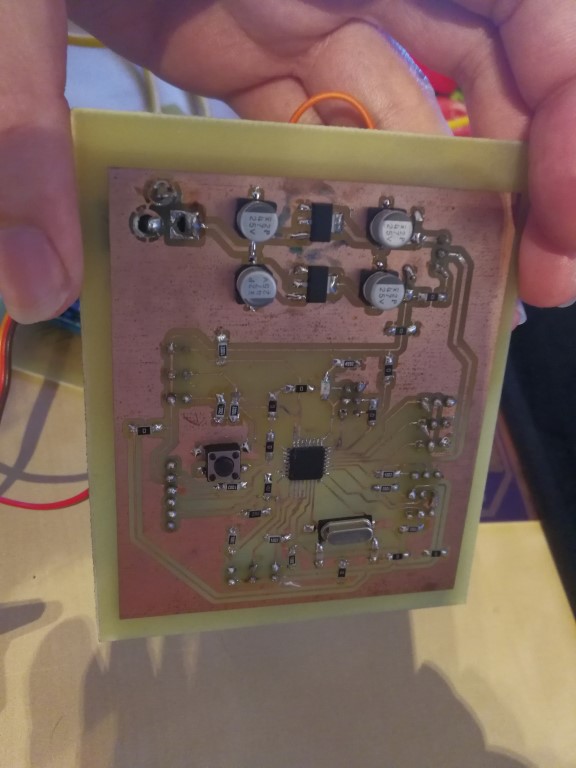
I will use Processing and controlIP5 in order to create a small interface to control the movement of a servo motor with buttons and others stuffs I have time
moving the motor
The arduino here is just as FTDI cable (lost mine, shame on me!). The goal of the software below is to send via the serial console the string 'Sx'where x is a value between 0 to 180.
It will be parse to retrieve only the value and sent to the servo motor in order to make it move to the retrieved value. Don't pay attention to the part dedicated to the DHT sensors, I will be used for another exercise
This code will be loaded in my board instead of the Firmata firmware as described in Thomas's tutorial.
It's more intuitive for to stay with arduino code and use serial communication between my board and Processing.
#include <DHT.h>
#include <DHT_U.h>
#include <Servo.h>
#define DHTTYPE DHT11
#define DHT0PIN 5
#define DHT1PIN 6
#define DHT2PIN 7
#define SERVO0PIN 10
#define SERVO1PIN 9
#define SERVO2PIN 8
#define PHOTO0PIN A0
#define PHOTO1PIN A1
#define PHOTO2PIN A2
#define BUTTON0PIN 2
#define BUTTON1PIN 3
#define BUTTON2PIN 4
Servo mservo;
DHT dht2(DHT2PIN, DHTTYPE);
String inputString = ""; // a string to hold incoming data
boolean stringComplete = false; // whether the string is complete
void setup() {
// initialize serial:
Serial.begin(9600);
mservo.attach(SERVO0PIN);
dht2.begin();
// reserve 200 bytes for the inputString:
inputString.reserve(200);
}
void loop() {
if (stringComplete) {
switch (inputString.charAt(0)) {
case 'S':
setServo(inputString);
break;
default:
break;
}
inputString = "";
stringComplete = false;
}
}
void setServo(String command) {
int pos = command.substring(1).toInt();
mservo.write(pos);
delay(1000);
}
float oldH;
float oldT;
void readDHT() {
float h = dht2.readHumidity();
float t = dht2.readTemperature();
if (isnan(h) || isnan(t)) {
}
else {
if (h != oldH) {
Serial.print("H");
Serial.println(h);
oldH = h;
}
if (t != oldT) {
Serial.print("T");
Serial.println(t);
oldT = t;
}
}
}
void serialEvent() {
while (Serial.available()) {
// get the new byte:
char inChar = (char)Serial.read();
// add it to the inputString:
inputString += inChar;
// if the incoming character is a newline, set a flag
// so the main loop can do something about it:
if (inChar == '\n') {
stringComplete = true;
}
}
}
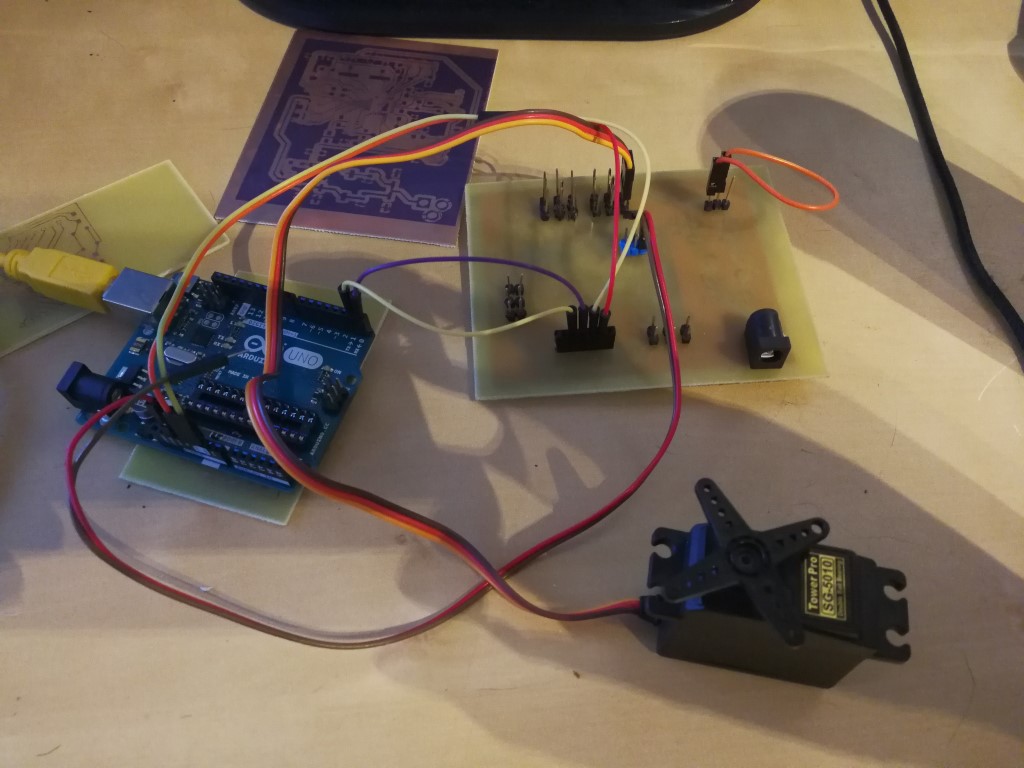
The GUI itself
First thing first, you need to install processing and then install the two needed libraries : Arduino, ControlP5
You have to go in "sketch --> add library and then make a search for the correct library"
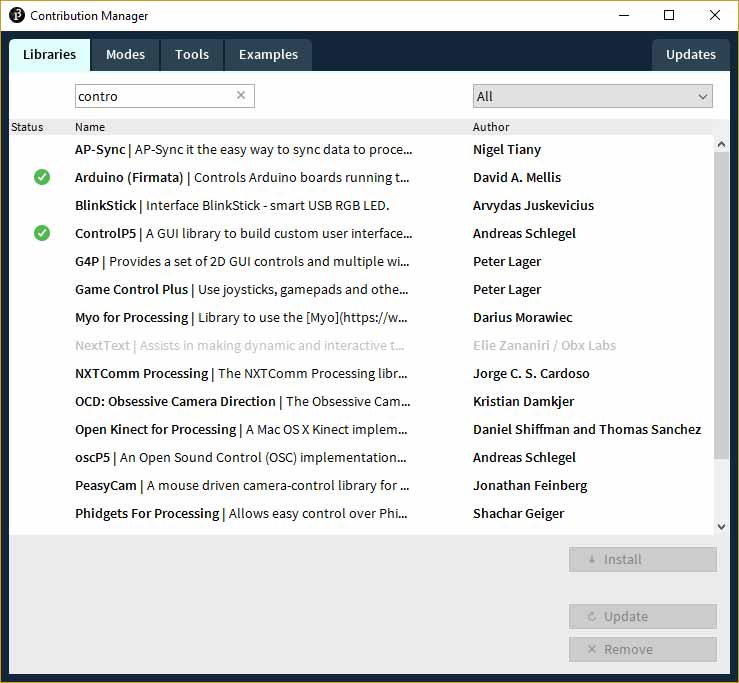
Once it's done, it's time to make a small interface in order to control my motor. I will use the slider example to start, somethin more ambitious will be done for the final project
I have remove all the unnecessary things so I can focus on the GUI and the effect of the slider on my board and motor
I have lost a tremendous amount of time just because of a faulty jumper wire : It was working but barely so the debugging was a nightmare during two evenings.
import processing.serial.*;
import cc.arduino.*;
Arduino arduino;
import controlP5.*;
ControlP5 cp5;
int myServoValue ;
int sliderValue = 0;
int sliderTicks1 = 100;
Slider a;
Serial myPort;
void setup() {
size(700,400);
printArray(Serial.list());
myPort = new Serial(this, Serial.list()[0], 9600);
myPort.write("S"+0+"\n");
noStroke();
cp5 = new ControlP5(this);
// add a horizontal sliders, the value of this slider will be linked
// to variable 'sliderValue'
cp5.addSlider("Angle")
.setPosition(100,50)
.setRange(0,180)
;
}
void draw() {
background(sliderTicks1);
fill(sliderValue);
rect(0,0,width,100);
}
void Angle (int angleValue) {
myServoValue = angleValue;
myPort.write("S"+myServoValue+"\n");
}
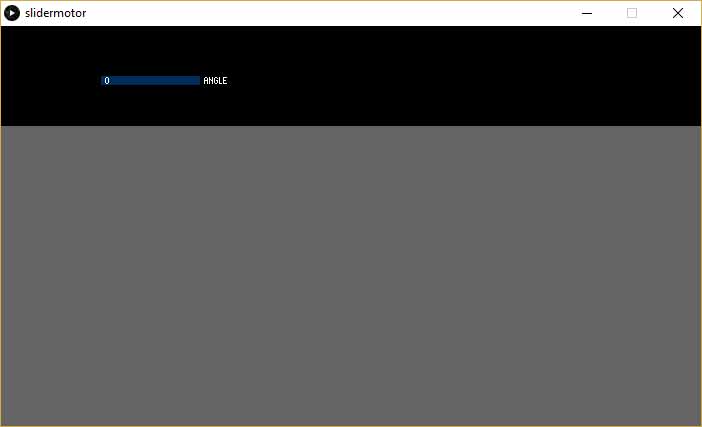
Here is the proof in video!
Summary :
This assignment was really frustrating for one and only one reason...I have just lost two nights of debugging because of a faulty jumper wire, I'm eager to do something more ambitious with the final project but the basic idea is there